How to Kill a Tree Stump
- October 2, 2024
- 0 comment
Removing a tree stump can be a daunting task, especially if the tree was large or well-established. While cutting down a tree may seem like the hard part, tree stumps are often left behind, creating an unsightly and potentially hazardous obstacle in your yard.
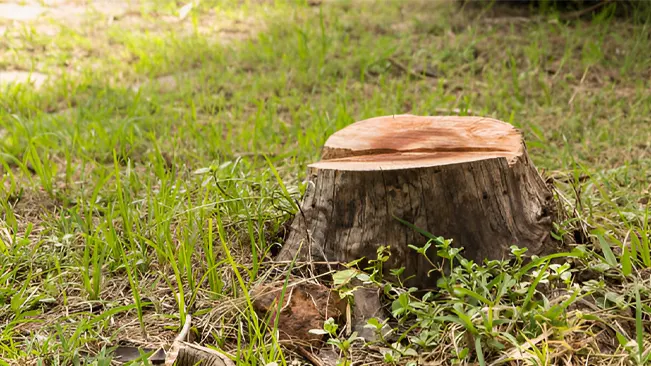
Moreover, tree stumps can continue to sprout new growth if not dealt with properly. Whether you want to kill a tree stump for aesthetic reasons, to prevent new growth, or to clear space for landscaping, there are several methods you can use.
List of Table Content
- Why Kill a Tree Stump?
- Different Methods to Kill a Tree Stump
- Chemical Stump Killers
- Natural Methods
- Physical Removal Methods
- Preventing New Growth
Why Kill a Tree Stump?
Tree stumps are not just an eyesore; they can also present several problems if left unattended. Here’s why you might want to get rid of one:
- New Growth: Even though the tree has been cut down, the stump can still sprout new shoots. This can lead to the tree regenerating, creating an ongoing maintenance issue.
- Pest Infestation: Old stumps can become a breeding ground for termites, ants, and other pests, which may then spread to nearby trees or even your home.
- Fungal Growth: A dead tree stump can rot over time, leading to the growth of fungi that could potentially harm other plants in your yard.
- Space Utilization: Stumps can take up valuable space in your yard, preventing you from replanting, gardening, or expanding your outdoor living space.
- Hazard: Stumps can become a tripping hazard, especially for children or during nighttime.
Different Methods to Kill a Tree Stump
When considering how to kill a tree stump, the method you choose will depend on your timeline, budget, and environmental concerns. Below are some of the most effective ways to ensure a tree stump is dead and gone for good.
Chemical Stump Killers
Using chemicals is one of the most common ways to kill a tree stump. While effective, it can take time for the chemicals to fully penetrate and kill the stump.
1.1 Potassium Nitrate
Potassium nitrate is a popular chemical used to accelerate the decomposition of stumps. It’s commonly found in commercial stump removal products because it hastens the breakdown of the wood.
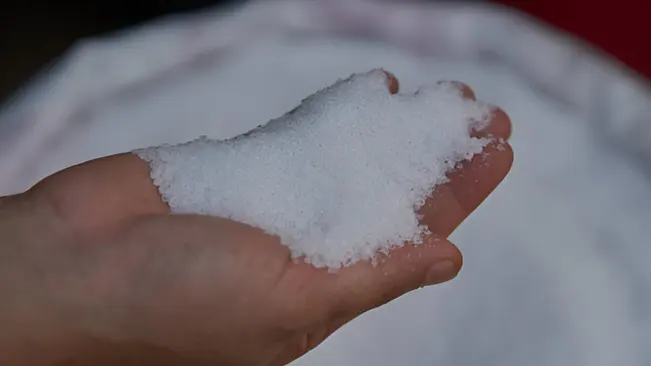
- Steps to Use:
- Drill holes into the top and sides of the stump using a power drill with a large bit (about 1 inch in diameter).
- Pour potassium nitrate into the holes and add water to dissolve the chemical.
- Over the next few weeks, the stump will begin to rot, making it easier to remove.
1.2 Glyphosate or Triclopyr Herbicides
Another option is to use herbicides such as glyphosate or triclopyr. These chemicals are absorbed by the stump, killing it from the inside out.
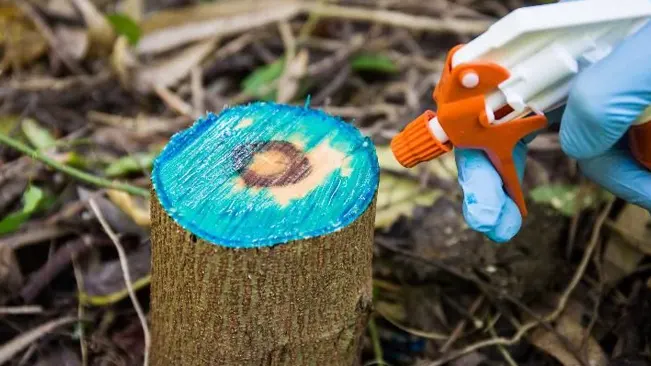
- Steps to Use:
- Cut the stump down as close to the ground as possible.
- Apply the herbicide directly onto the freshly cut surface. Be sure to cover the entire stump for maximum effectiveness.
- The stump should die within weeks, after which it can be removed.
1.3 Epsom Salt
For those who prefer a less toxic option, Epsom salt can be used to kill a tree stump, though the process is slower.
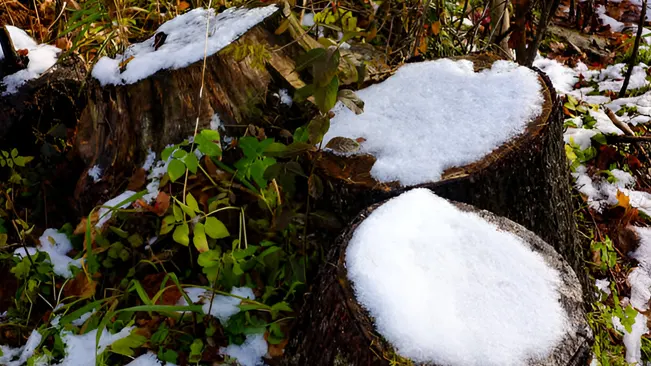
- Steps to Use:
- Drill holes into the stump.
- Fill the holes with Epsom salt and water.
- Over several months, the salt will dehydrate the stump, killing it and preventing further growth.
Natural Methods
If you’re concerned about chemicals or prefer an eco-friendly approach, several natural methods can be used to kill a tree stump. These methods tend to take longer but are safer for your yard and surrounding environment.

2.1 Covering or “Smothering” the Stump
A simple but effective way to kill a tree stump is to deprive it of sunlight and oxygen. This can be done by covering it with a tarp or plastic sheeting.
- Steps to Use:
- Cut the stump down as close to the ground as possible.
- Cover the stump with a heavy tarp or plastic to block sunlight and moisture.
- Weigh down the covering with rocks or bricks to ensure it stays in place.
- Over time, the stump will die due to the lack of essential nutrients from sunlight and water.
2.2 Boiling Water
Using boiling water is another natural way to kill a stump, although it’s most effective for smaller tree stumps.
- Steps to Use:
- Drill holes into the stump to allow water to penetrate deeper.
- Boil a large pot of water and pour it directly into the holes and over the surface of the stump.
- Repeat this process several times until the stump starts to die and decompose.
2.3 Rock Salt
Rock salt works similarly to Epsom salt, drawing moisture out of the stump and eventually killing it.
- Steps to Use:
- Drill holes in the stump and pack them with rock salt.
- Add water to help the salt dissolve and spread through the stump.
- Over time, the salt will dry out the stump, preventing new growth.
Physical Removal Methods
For those who want a faster, albeit more labor-intensive solution, mechanical removal methods are also available. These methods are often used when the stump needs to be removed quickly or when you plan to replant or build in the area.
3.1 Stump Grinding
Stump grinding is a popular method used by professionals and DIYers alike to remove tree stumps.
- Steps to Use:
- Rent a stump grinder from your local equipment rental store.
- Position the grinder over the stump and turn it on.
- Use the machine to grind the stump down to below the ground level.
- Once ground, fill the hole with topsoil and plant grass or other plants over the area.
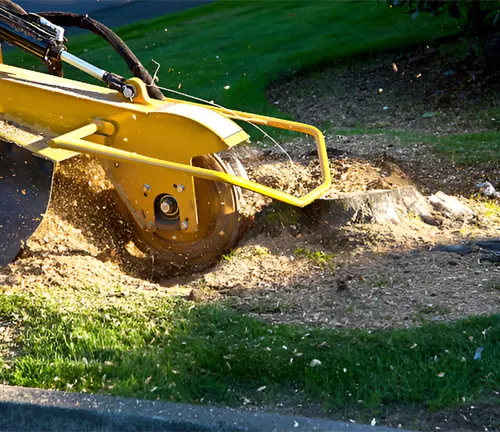
3.2 Digging Out the Stump
Digging out a stump manually is hard work but can be effective, particularly for smaller stumps.
- Steps to Use:
- Dig around the stump, exposing the roots.
- Use a saw, ax, or chainsaw to cut through the larger roots.
- Once the roots are cut, you should be able to pull the stump out of the ground.
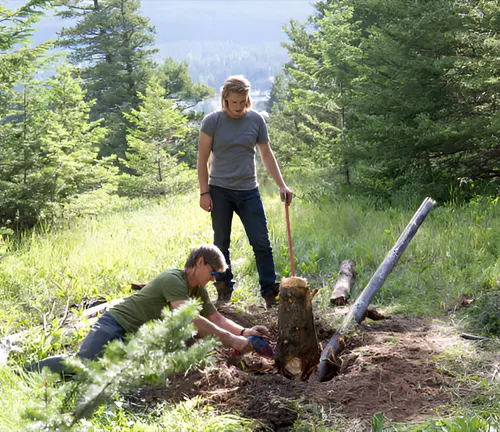
3.3 Burning the Stump
Burning is a fast and effective way to get rid of a tree stump, but it requires safety precautions and might not be allowed in some areas due to fire regulations.
- Steps to Use:
- Drill holes in the stump and fill them with a flammable substance, such as kerosene.
- Let the stump soak for several days to absorb the fuel.
- Light the stump on fire and monitor it closely to ensure it burns safely.
- Once the fire has consumed the stump, shovel the ashes into the hole and cover it with soil.
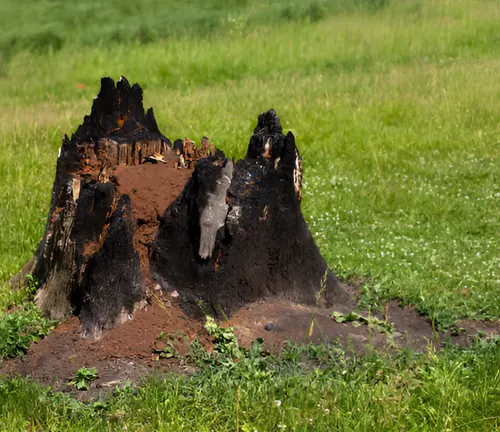
Preventing New Growth
Even after you’ve killed or removed the stump, there’s a chance that new shoots or suckers may sprout from the remaining roots. To prevent this from happening:
- Use Herbicides: After cutting the tree, immediately apply an herbicide to the stump and surrounding roots to prevent any regrowth.
- Monitor the Area: Keep an eye on the area for any signs of new shoots and remove them promptly.
- Mulching: Apply a thick layer of mulch over the stump area to block sunlight and inhibit new growth.
Conclusion
Killing and removing a tree stump doesn’t have to be a back-breaking or overwhelming process. Whether you choose chemical methods, natural solutions, or physical removal techniques, there are plenty of options available based on your needs, budget, and timeline. From speeding up natural decay with potassium nitrate to physically grinding the stump into the ground, the right solution is within reach. Choose the method that works best for you, and soon that unsightly tree stump will be nothing more than a distant memory.
Frequently Asked Questions (FAQ)
- How long does it take for a tree stump to decompose naturally?
Without any intervention, a tree stump can take anywhere from 3 to 7 years to fully decompose, depending on the tree species, stump size, and environmental conditions. - Is it possible to kill a tree stump without using chemicals?
Yes, you can kill a tree stump using natural methods like covering it to block sunlight, using Epsom salt or rock salt, or even by pouring boiling water over it. These methods take longer but avoid chemical use. - How deep should I drill holes in the stump to apply stump killer?
Drill holes about 8-10 inches deep, spaced a few inches apart, to ensure that the stump killer or other substances penetrate deeply enough to reach the root system. - Will covering a tree stump with soil or mulch speed up its decay?
Yes, covering the stump with soil or mulch helps retain moisture and heat, which encourages the growth of decay-causing organisms and speeds up the decomposition process. - Can I plant a new tree or plants where the stump was?
Yes, you can replant in the same area once the stump has been completely removed or decayed. It’s a good idea to enrich the soil with compost or fresh topsoil to replace any nutrients lost during stump decomposition. - Is stump grinding better than using chemicals?
Stump grinding is faster and removes the stump immediately, while chemical methods take longer but are less labor-intensive. The best choice depends on how quickly you want the stump gone and whether you prefer a mechanical or chemical solution. - Can I use household bleach to kill a tree stump?
Household bleach can be used to kill small tree stumps, but it’s not the most effective method. Applying bleach will dry out the stump and may prevent new growth, but it’s slower than specialized stump killers. - How can I prevent new shoots from sprouting after cutting down a tree?
Applying herbicide immediately after cutting the tree or using natural methods like covering the stump with a tarp can prevent regrowth. Also, frequent removal of new shoots will deplete the stump’s energy. - What’s the best time of year to kill a tree stump?
Late spring or summer is ideal for killing a tree stump, as the stump is more active in its growth phase and will absorb chemicals or other killing agents more efficiently. - Is burning a tree stump safe?
Burning a tree stump can be an effective removal method but should only be done if it’s safe and legal in your area. Always check local fire regulations and follow safety precautions to prevent accidents.

Charles Hayes
Forestry AuthorI'm Charles Hayes, I bring over 15 years of specialized expertise in landscaping and woodworking, blending artistic design with sustainable environmental stewardship. My career, fueled by a profound passion for the natural world, encompasses extensive education and hands-on experience in creating harmonious, eco-friendly outdoor spaces and responsibly managing forest resources. Recognized for my professional standing, I am committed to continuous learning and certification in cutting-edge practices. My expertise is not only reflected in my work but also in my contributions to community projects, educational workshops, and collaborations with industry leaders. As an authoritative voice in my field, I strive to share knowledge and promote environmentally conscious approaches, making me a trusted resource in landscaping and forestry.

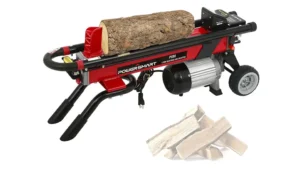


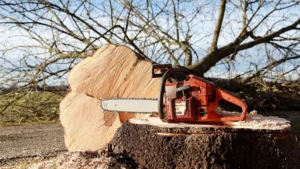

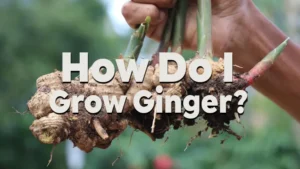



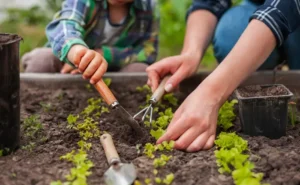
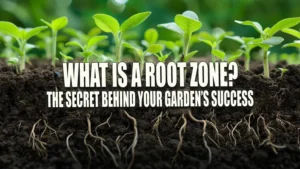
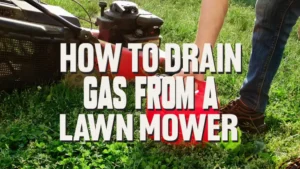
Leave your comment